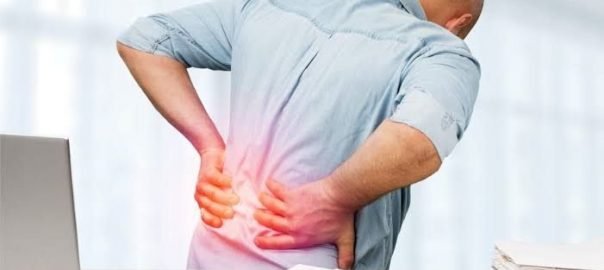Low back pain means pain in the lower back. The pain is due to injury to the vertebrae, intervertebral disc, ligament, or muscle in that area. It is estimated that 90% of the population will sometime suffer from an episode of low back pain. It is the most frequent cause of incapacity for work in people under 45 years of age. Low back pain is so frequent due to the erect position of the human being that it makes the spine and especially the lower back support more weight, explains the best rheumatologist in Delhi.
Causes.
The causes are multiple and can be divided into causes of mechanical origin and inflammatory causes. The causes of mechanical origin are much more frequent and lie in alterations in the mechanics and statics of the structures that form the lumbar spine. Among them, lumbar osteoarthritis (it is the most frequent cause of low back pain), osteoporosis, an atrophic lumbar musculature (weak) or scoliosis (alteration of the normal curvatures of the spine, causing a lateral deviation) stands out first. The causes of inflammatory origin are those due to inflammation of the spine. The most frequent disease is ankylosing spondylitis. Other rare causes are infections and tumors. Factors that aggravate low back pain are excessive sedentary lifestyle, inadequate postures, weight bearing, and obesity, explains the rheumatologist in Delhi.
Symptoms.
The most common low back pain is one that worsens when standing for a long time or when prolonged incorrect postures are maintained. When lying in bed the pain usually disappears. If the pain appears at rest or at night, it is probably due to inflammation of the spine. This last type of pain is much less frequent and must always be studied by the rheumatologist in Delhi since it can be a symptom of spondylitis (especially in young men). There is also usually a feeling of stiffness in the back and decreased mobility, especially when bending over.
Low back pain can be acute (lasts less than 6 weeks and responds well to treatment) or chronic (lasts more than 6 weeks and is difficult to treat). If low back pain radiates to the leg below the knee it is called lumbar sciatica or sciatica. Tingling usually occurs and sometimes a feeling of lack of strength in the leg. Sciatica is usually due, in younger people, to a herniated disc (the intervertebral disc shifts and compresses the nearest nerve root), and in older people, spinal osteoarthritis (vertebral impingement and bone formation). new (osteophytes) that compresses the nerve root).
Diagnosis.
The diagnosis is simple and is established according to the characteristics of the pain and the rheumatological examination. If the pain lasts more than three weeks, an x-ray of the spine is performed. If there are any neurological (sciatic) complications that will require surgical treatment, other complementary tests are performed, such as magnetic resonance imaging or computed tomography (CT).
Treatment.
75% of patients with acute low back pain respond to treatment and improve in less than four weeks. The goals are to relieve pain and restore spinal function for work and daily life. Rest, drugs (pain relievers, anti-inflammatories, muscle relaxants) and physical therapy (local heat, massages) are the mainstays of the treatment of acute low back pain. Chronic low back pain is much more difficult to treat, and requires multidisciplinary treatment by specialized health personnel (back school). Only 10% of patients with acute low back pain develop chronic low back pain.
Once the acute episode has been treated, to avoid relapses (one out of four patients with acute low back pain suffers) it is essential to correct postural habits during sleep, standing, sitting, driving vehicles, work place, in the weight load …
It is important not to remain sitting or standing doing the same activity during prolonged episodes. You have to change your posture and activity frequently.
It is essential to perform regular stretching and strengthening exercises for the abdominal and back muscles, as well as performing regular trunk and hip flexibility exercises. And an ideal weight must be achieved and maintained, suggests the rheumatologist in Delhi.


